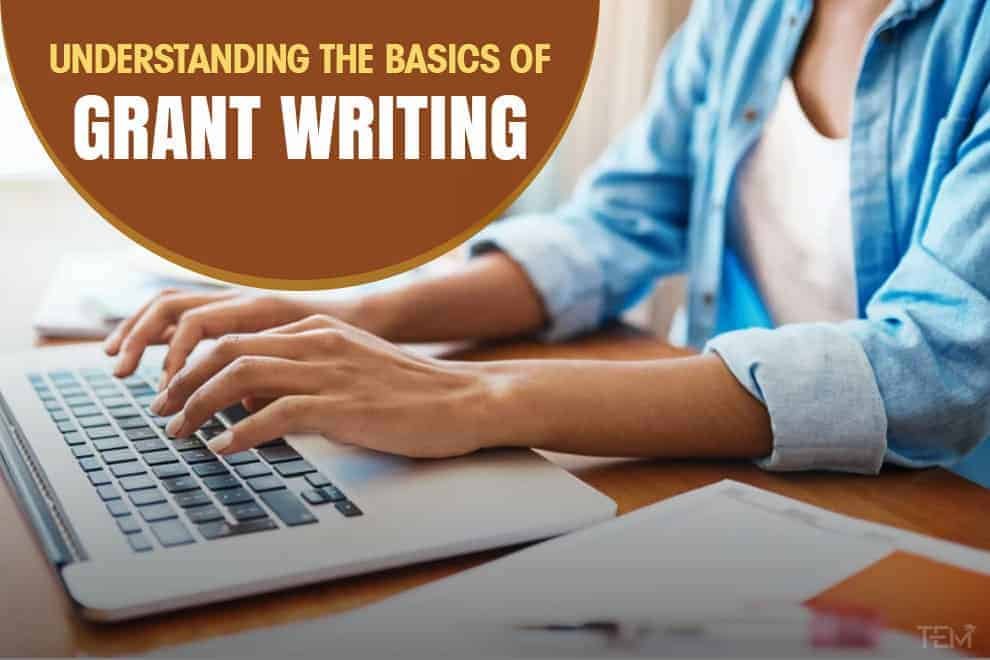Grant Writing is one of the most challenging forms of writing. It is a daunting task but can be mastered over time. ‘Grant Writing’ is an art that can be mastered using the three fundamental P’s—Practice, Patience, and Perseverance. The process requires dedication and awareness of meaningful terminologies to be a success.
Grant Writers are just like other writers and authors—but with a technical qualification for the job. People who have researched grant prospects are aware of how the opportunities for funding partners swing between few and far.
So, what is it about grant writing that makes it so competitive and challenging? Before we unfold the basics and other essentials of grant writing, let us learn its definition and foundation.
What is Grant Writing?

Picture this. You have valuable research or you aim to build a non-profit organization for a particular cause. You also possess the determination and the distinct vision required to form the foundation of your research or non-profit community. The only thing you need is funding to improve or advance your vision towards reality. You are ready to seek funding and all you have to do is draft a grant proposal to achieve get a step further to your dream. This process of drafting a grant proposal is known as grant writing.
In other words, grant writing is the process of writing an application for a financial grant funded by an institution such as a government department, foundation, or trust. These application processes are generally known as grant proposals or grant submissions.
What do grant writers do?

Grant Writers research, draft and submit grant proposals that help organizations or individuals with receiving grant funding. They usually possess a range of skills and require a bachelor’s degree to qualify for entry-level jobs.
Often, the field of study does not matter, but courses in marketing and English can prove beneficial in the long run. Experienced grant writers can also opt for earning certificates to showcase their proficiency and improve their employment options.
What are the basics of grant writing?

It is noteworthy that several grant proposals end up rejected due to various reasons. Successful grant writing requires a clear understanding of grantsmanship—awareness of the basics and essentialities of grant writing.
One needs to be broadly aware of the several areas and aspects of grant writing to fine-tune the target and language appropriately.
Following are some of the basics of grant writing:
- Strategize a specific, meaningful, and appropriate proposal, stating what you want to do and why you want to do it.
- Analyze your target audience and your prospects. Research whether their mission aligns with your vision.
- Review the organization’s proposal guidelines; and
- Examine sample proposals from your department, peers, and/or the organization.
- Be clear about the purpose of the proposal. Ensure that your vision and ambition are reflected clearly in the proposal.
- Brief or summarize your research using appropriate and formal language
- Formatting, revising, editing, and proofreading the proposal
- Submitting the proposal and be hopeful about the outcomes.
How to write a grant proposal?

Grant writing is a very challenging skill, but it is no catch-22. Precision and perfection can be achieved with sufficient knowledge about grant writing and the basic requirements.
You can learn how to write a grant proposal using the following ways:
- Preparations
Be prepared. Prepare yourself for the entire process by acquiring all the required materials and resources. Scrutinize the organization you are seeking and research their grant proposals. Be thorough about their mission and ensure that it is parallel to your vision. You can also go through some sample grant proposals for revisions.
- Brief Cover Letter
The cover letter is your perfect tool to seize the opportunity. Make sure that it is short, brief, and captures the funder’s attention. Be direct about your intentions and make yourself clear about seeking funding without sounding too emotional. Show that you understand the funder and draw a straight line from their mission and funds to your proposed project.
- An Executive Summary
Every successful grant requires a short and brief executive summary. Avoid making it lengthy by extending it beyond two pages. Include all your resources and introduce your organization. Do not, however, address the funder directly. Keep the language formal and provide just enough information that the grantee can read only this part and get a solid idea of who you are and why you need the money.
- Introduction
After the above briefings, introduce your organization. You can include the following in the introduction
- A biography of key staff, your business track record (success stories) company’s goals, and philosophy;
- Essential highlight of your expertise
- Client recommendations, letters of thanks, feedback from customers and the general public;
- All valid industry certifications (ISO or Quality Certifications), licenses, and business and indemnity insurance details.
- Direct Problem Statement
Writing the direct problem statement is one of the most crucial processes of grant writing.
It is also known as the “needs statement” or “statement of need”. It is the place where you explain the problem(s) of your community and how you can provide the solution.
For this, you need to do extensive research in various areas. These include the history of the underlying problem, previous solutions that were implemented and potentially failed. You also need to explain why and how your solution can help make a difference.
- Goals and Objectives
Always be clear about your goals and objectives. Numerous proposals fail because they forget or mishandle this step—all their hard work goes to waste. Here, write the essential details about the desired outcomes. You can also include how you will measure success. This section is key to providing information on the benefits that the grantee, community, government, or client will see for their investment.
Keep the goals separated from the objectives, as they signify two different contexts. Include the outcomes under the objectives section.
- Project Designing
After elaborating about your intentions and purposes, it is time for substantiating your methods and approaches to achieving your goals. You can list the new hires and skills, additional facilities, transport, and support services required to deliver your project and achieve the defined measures for success.
- Evaluation Process
Your evaluation process needs to include some feedback from the community involved in the project. One of the most vital variables here is whether you are conducting the process with your staff or hiring an external agency to do it independently. Always ensure to draw a clear outline and avoid being vague. Do not neglect the time frames.
- Varied Funding Sources
Prove your funders that you have the potential to achieve your vision. Funders are usually uninterested in investing in projects which have no long-term perspective. This section includes the total cost of ownership such as ongoing maintenance, daily business, and operational support. It may also require you to articulate the projected ongoing costs (if any) for at least five years.
- Outlining Budget
Outlining your budget outline is one of the most crucial processes of grant writing. Here, you should be very specific and articulate about the necessary budget. While outlining your budget, ensure including the following points:
• Provide full justification for all expenses such as a table of services (or service catalog) and product offered can be used to clearly and accurately specify the services; and
• Explain in detail how you will harness the resources from an operational standpoint.
The Bottomline
Grant writing is a very daunting task. One needs to be very careful about all the elements and maintain caution while drafting a grant proposal. Grant writing requires devoted hard work. You have to analyze your vision and consider your desired solutions critically. However, despite several efforts, several grant writers face explicit rejection. But failure should not crush you and help your build yourself. Re-analyze your grant proposals and learn how you can improve them for future purposes. Writing closely with your project will help you understand the gist more clearly and assess it irrespective of the community’s perspective. Nevertheless, keep writing!


